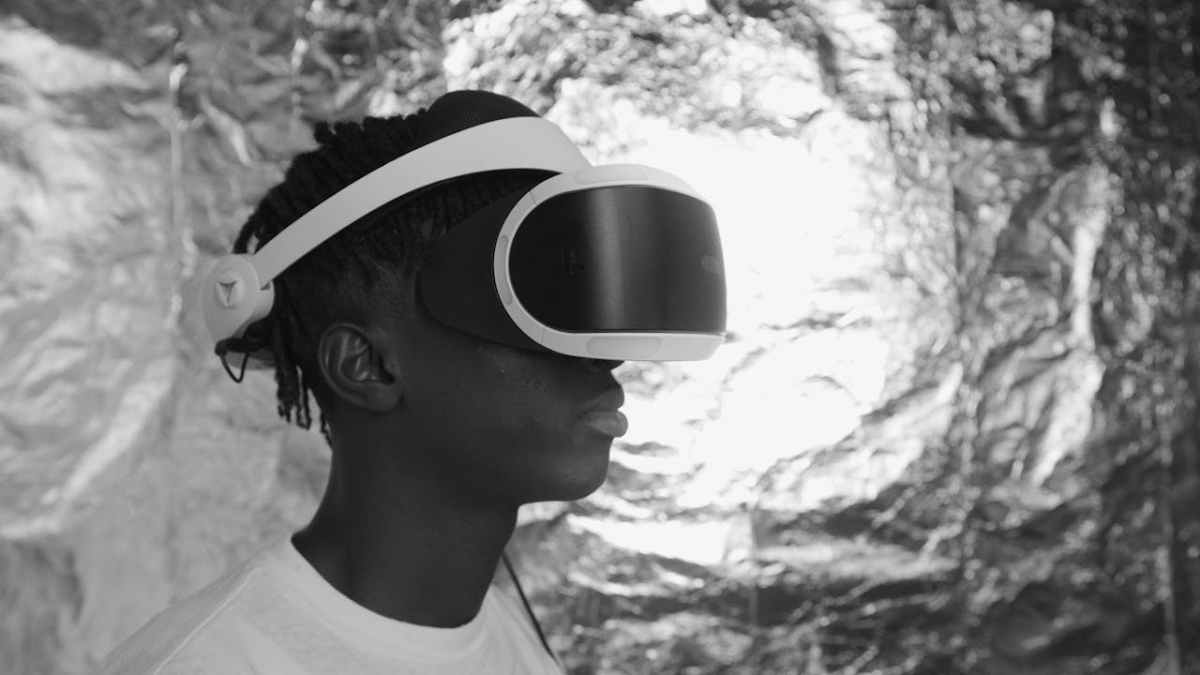Virtual Reality Glasses: what are they?
Virtual Reality (VR) glasses are devices that cover the eyes to present users with fully digital environments through immersive experiences where they can move and interact as if they were really inside the virtual world.
Through screens and sensors that detect the movements of the wearer’s head, they are often accompanied by controllers to interact with the content.
Types of VR glasses
The types of Virtual Reality devices vary depending on whether the glasses are connected or not and also on the type of device they are associated with. Let’s take a look at the main features of each type.
Connected or unconnected Virtual Reality glasses
VR glasses can be differentiated according to whether they require a cable or not.
- Glasses with a cable. These tend to perform better thanks to their connection to a computer, video game console or other device. Another feature is that the programme runs on the device and the glasses’ display acts as a peripheral.
- Glasses without a cable. These types of displays are more basic and economical, as well as easy to use and set up. However, they have limited features.
Virtual Reality glasses according to devices
Depending on the needs of each device, there are also different types of glasses.
- For smartphones. The mobile phone acts as the screen and processor. They are inexpensive, but also offer a basic experience.
- For PC. These require powerful devices in order to offer more detailed and advanced experiences that can be used for simulations with a certain degree of complexity or for demanding video games.
- For video game consoles. With characteristics very similar to the previous category, that of computers, they have the particularity that they are sometimes designed for particular models and/or brands.
- Standalone or autonomous. These do not need to be connected to other devices as they incorporate their own processors, screens or storage systems.
- Do it yourself – DIY. Usually made of cardboard for simple uses, they use a smartphone as a screen and processor.
Main uses of Virtual Reality headsets
Glasses are one of the main devices used for Virtual Reality, so their uses will correspond to those of technology in general.
Education
Based on the fact that the brain processes information mainly in a visual way (it retains 80% of images, 20% of text and 10% of sound), Virtual Reality is an ally of the educational world.
Being able to travel to other times or historical settings, explore different dimensions, improve creativity and increase empathy towards other situations or contexts are just some of the many benefits that this technology can bring to educational environments.
Culture
Another example of the use of VR is in the world of culture, with concerts, exhibitions and museums being prime examples. It is true that the experience of a physical concert and one through Virtual Reality will not be the same, but in cases where it is not possible to attend, VR can offer other advantages such as ‘experiencing’ it even from the stage itself.
With regard to museums and exhibitions, VR also offers the possibility of enjoying certain places that are inaccessible due to geographical distance. But that’s not all: interacting with the works of art themselves or enjoying historical simulations of the moments when they were created are other benefits that this technology brings to this field.
Video
Throughout the history of video games, their evolution has been enormous: from large machines in the mid-20th century to today’s sophistication, this industry would not be the same today without the possibilities offered by Virtual Reality.
Immersive Virtual Reality combined with low latency and the performance of technologies such as 5G are consolidating an increasingly realistic and real-time user experience in online games that was unthinkable just a few years ago.
Entertainment
Another example of the use of virtual reality glasses is Movistar Experiencia Inmersiva, a virtual world that offers a new way of interacting with the Movistar world, where users can play games, access exclusive audiovisual content from series or sports, or learn about Telefónica products and services, among other things, through Meta Quest devices.
